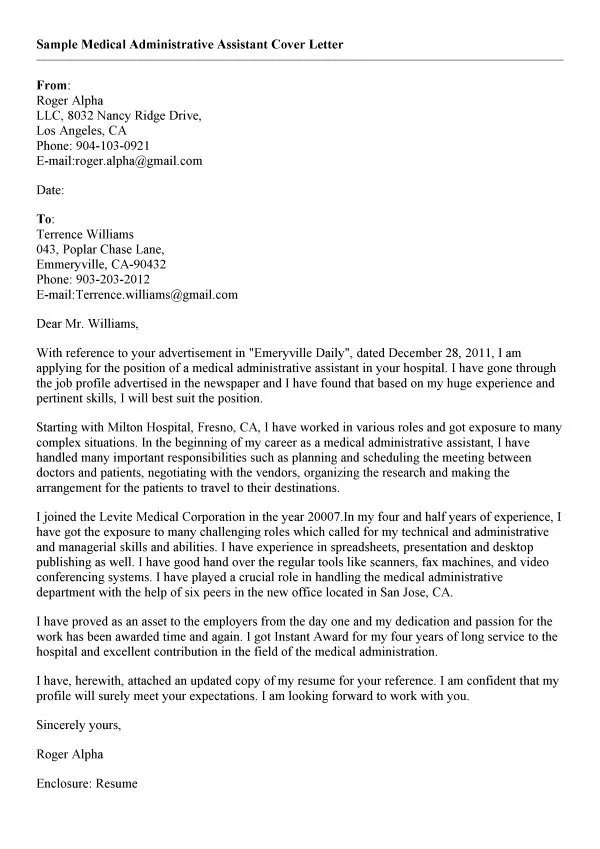Understanding Unadvertised Jobs
The job market extends far beyond advertised positions. Many incredible job opportunities exist that are never formally posted. These ‘unadvertised’ jobs are often filled through networking, direct outreach, and proactive applications. Mastering the art of applying for these hidden opportunities can significantly increase your chances of landing your dream job. This guide provides a comprehensive cover letter sample and the essential strategies to navigate this less-traveled path of job searching, enabling you to stand out and make a lasting impression on potential employers. This approach can be particularly effective when seeking roles at companies that don’t frequently advertise open positions or for specialized roles that require a more personalized approach.
What Are Unadvertised Jobs
Unadvertised jobs are positions that companies don’t publicly advertise through traditional channels like job boards or company websites. They are filled through internal referrals, networking, or proactive outreach from candidates. These roles often arise from internal projects, upcoming needs, or the company’s long-term strategic goals. Because they are not widely publicized, competition for these positions is generally lower. This presents a distinct advantage for job seekers who are willing to take the initiative to identify and apply for these opportunities. Understanding the nature of unadvertised jobs is the first step to success.
Why Target Unadvertised Jobs

Targeting unadvertised jobs provides several key advantages. First, the competition is often less fierce. With fewer candidates applying, your application is more likely to be seen and considered. Secondly, it shows initiative and a proactive approach, qualities that employers highly value. Moreover, unadvertised jobs can sometimes offer a better fit, as you are targeting specific companies and roles that align with your skills and career goals. Finally, this approach allows you to establish relationships with potential employers before a formal opening even exists, giving you a head start when a position does become available. This direct and personalized approach can significantly improve your chances of getting hired.
Crafting the Perfect Cover Letter
The cover letter for an unadvertised job is your introduction to a potential employer. It is a crucial tool that helps you make a positive first impression and secure a future job. It should be tailored to the specific company or individual and demonstrate your understanding of their needs. This section will guide you through the essential steps in crafting a compelling cover letter that grabs attention and highlights your unique qualifications. A well-written cover letter is not just a formality; it’s a strategic document that sets you apart from other candidates and positions you for success.
Research and Personalization
Before you start writing, do your research. Learn about the company’s mission, values, recent projects, and industry standing. Personalize your cover letter by addressing it to a specific person, if possible. If you can’t find a specific name, research the department head or the person in charge of hiring. Demonstrating this level of detail shows you’re genuinely interested in the organization and have invested time in understanding their operations. Use the company’s name throughout the letter and reference specific aspects of their work that resonate with you and your career aspirations. Use a company website, LinkedIn, or news articles to gather relevant information.
Highlighting Relevant Skills
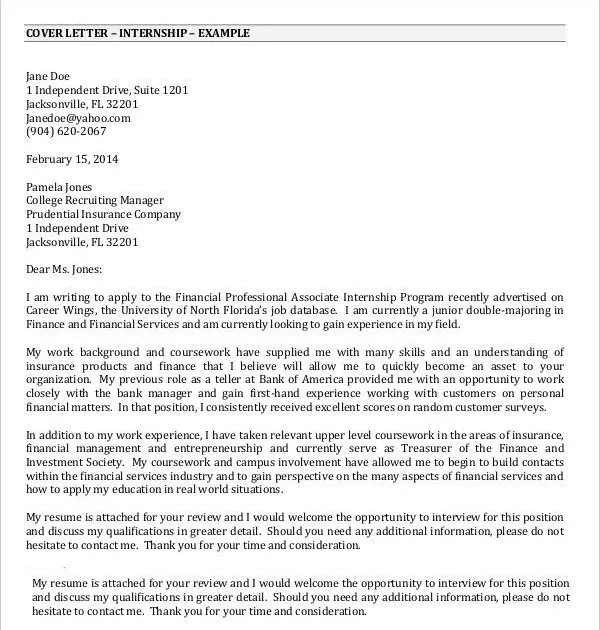
Identify the skills and experiences most relevant to the company’s needs. Even if a specific job isn’t advertised, there are likely skills that are valued across the industry or within the organization. Provide concrete examples of your accomplishments, using the STAR method (Situation, Task, Action, Result) to detail how you’ve demonstrated these skills in the past. Quantify your achievements whenever possible. For instance, instead of stating ‘Improved customer satisfaction,’ say ‘Increased customer satisfaction by 15% through implementing a new feedback system.’ This kind of data makes your claims more impactful.
Showcasing Your Value
Clearly articulate what you can bring to the company. Frame your skills and experiences in terms of how they can benefit the organization. Focus on how you can solve problems, improve processes, or contribute to its goals. Mention any industry trends you’re familiar with and how you can leverage them to improve company performance. Make it clear why you want to work for this specific company. This can be because of their culture, their products, their impact on the market, or the opportunities they provide for professional growth. Demonstrate why you are a great match for their current and future needs.
Structuring Your Cover Letter Sample
A well-structured cover letter is easy to read and highlights the most important information. The organization of your letter is just as important as its content. A clear structure helps the reader quickly grasp your key qualifications and your suitability for the role. This section will provide you with the best practices for structuring your cover letter, ensuring that your message is conveyed effectively and leaves a lasting impression.
Header and Contact Information
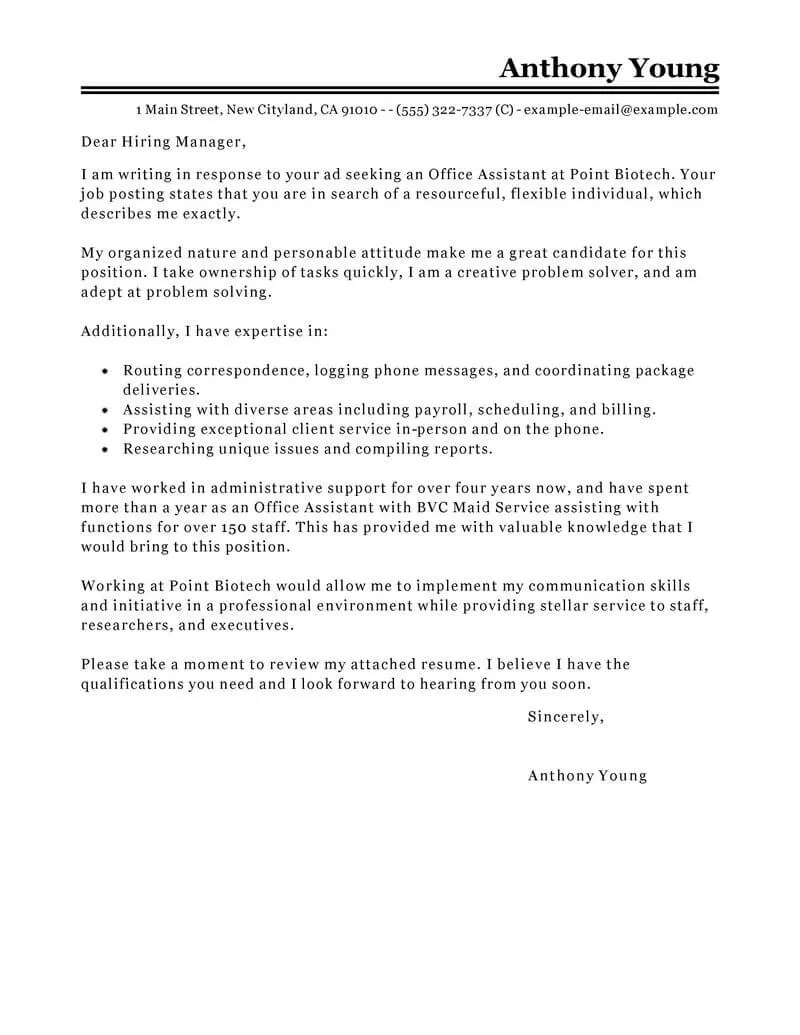
Start with your name, address, phone number, and email address. Include the date and the name and title of the person you are addressing, along with the company’s address. Ensure your email address is professional. The header should be clean and easy to read. This information establishes your identity and provides the means for the hiring manager to contact you. It’s essential to present this information correctly, making it readily available to the recruiter without unnecessary effort.
The Opening Paragraph
The opening paragraph is your first opportunity to capture the reader’s attention. Clearly state the purpose of your letter: to express your interest in working for the company, even if there is no specific job opening advertised. If you were referred by someone, mention the name of the person, as this can help you make a connection with the recruiter. Express your enthusiasm for the company and briefly mention a few key qualifications that align with its values and business. This is where you convince the reader to continue reading.
Body Paragraphs Skills and Experience
The body paragraphs are where you showcase your skills and experience. Structure these paragraphs to highlight your most relevant qualifications for the company. Use specific examples to demonstrate how you’ve successfully applied your skills in the past. Mention the tasks, actions, and results you achieved. Use keywords from your research to demonstrate that you understand the company’s needs and values. Keep the language concise, and focus on the positive impact you can bring to the organization. Include relevant accomplishments or project examples that show you have the ability to perform the type of work the company does.
The Closing Paragraph Call to Action
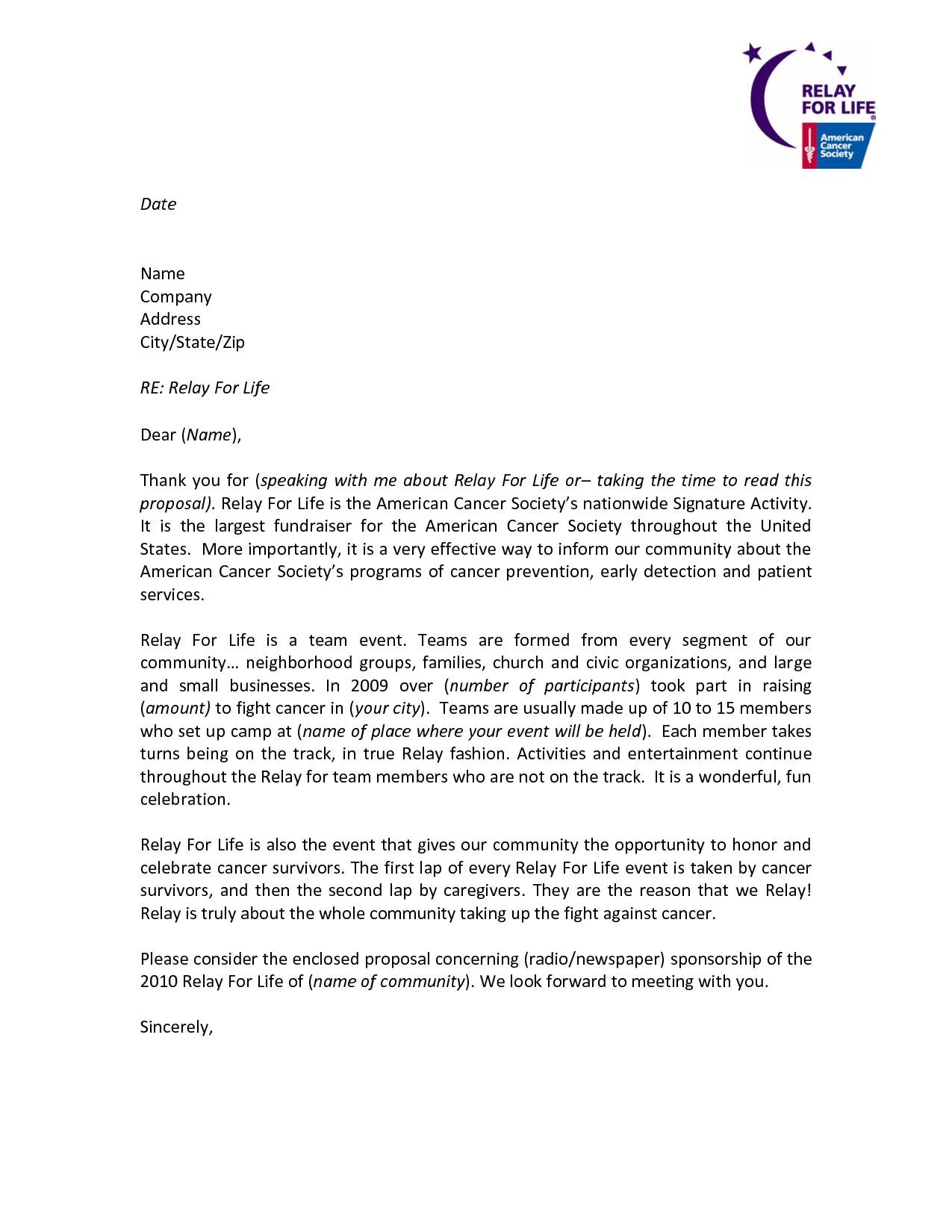
In the closing paragraph, reiterate your interest and enthusiasm for the opportunity. Express your availability for an interview and thank the reader for their time and consideration. Include a call to action, such as stating that you look forward to discussing how you can contribute to the company. Reiterate how your skills align with the company’s values and goals. Proofread carefully to ensure that there are no grammatical errors. End with a professional closing like ‘Sincerely’ or ‘Best regards,’ followed by your name.
Cover Letter Sample Examples
Reviewing cover letter sample examples will help you understand how to tailor your application to different scenarios. Here are a couple of examples to help you refine your application. Remember, always customize these examples to fit your background and the specific company you’re targeting. Use the provided templates as a starting point, and adapt them to reflect your unique skills and experiences.
Example for a Specific Company
If you know the company well, and you have identified the individual to whom you will send the letter to, you can be more specific. Include details about the company’s recent projects or initiatives to show you’ve done your homework. Highlight how your skills are a good match, and explain how you can help them achieve their goals. Show them how your abilities and experience directly address their needs and objectives. Customize the letter to demonstrate a strong interest and understanding of the company’s values and market position.
Example for a General Application
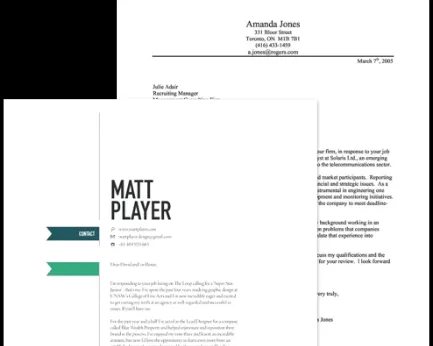
If you’re applying to a company without a specific contact, use a more general approach. In this case, focus on how your skills and experience align with the company’s overall values and what the company is known for. Demonstrate your research, and showcase any potential areas where you can add value. Be clear about the type of role you are seeking. Mention the key skills you have that would be beneficial in the organization. Emphasize that you are open to discussing potential opportunities. This demonstrates flexibility and willingness to contribute to the organization.
Tips for Success
Beyond the structure and content, some additional tips can increase your chances of success. Focus on the details, and show that you care about the company. These strategies will help you create a cover letter that stands out from the competition and presents you as a top candidate.
Proofreading and Editing
Always proofread your cover letter multiple times. Check for any grammatical errors, spelling mistakes, and punctuation issues. Ask a friend or family member to review your cover letter to catch any errors you may have missed. Ensure that the tone is professional and the formatting is consistent. A polished cover letter showcases your attention to detail, which is an essential quality for any role. Careful proofreading and editing are essential to making a good impression on the reader.
Follow-Up Strategies
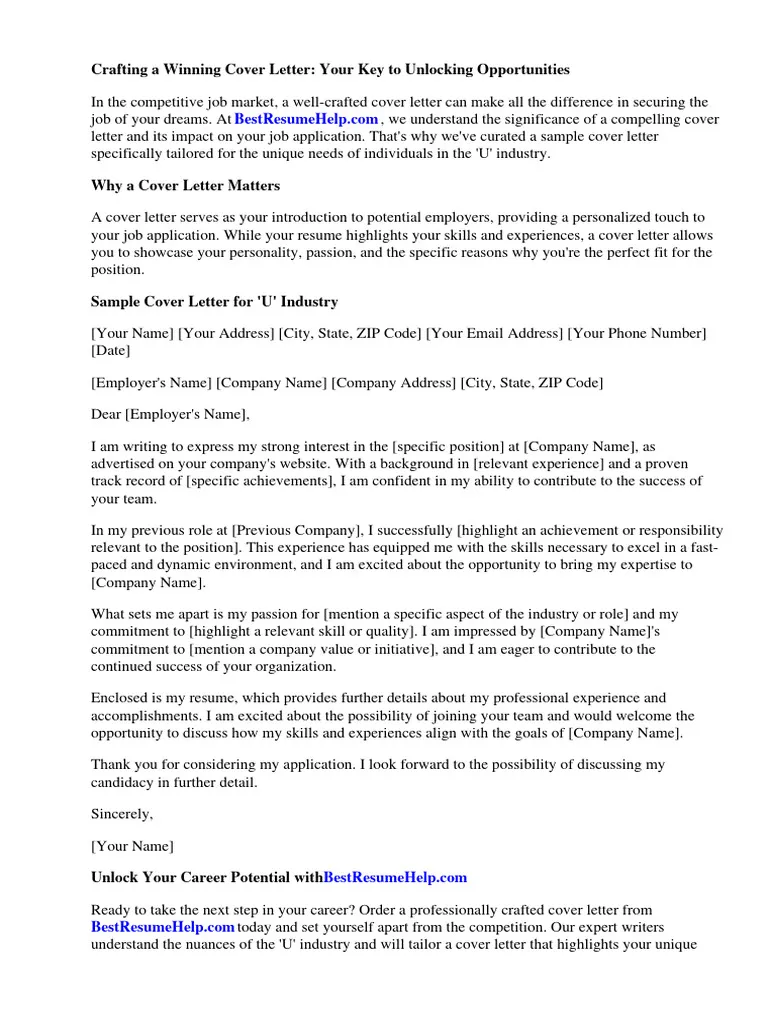
Follow up is critical to getting the company’s attention. Send a follow-up email or a phone call approximately one week after you submit your cover letter. In your follow-up, briefly reiterate your interest and ask if they have any questions. Show that you are persistent and eager to hear back from them. This demonstrates your enthusiasm for the position. If you don’t hear back after a second follow-up, you may consider sending a final email to reiterate your interest. Be polite and respectful, and do not be discouraged if you don’t receive an immediate response. Persistence and follow-up can make all the difference in getting your application noticed.
Formatting and Presentation
The presentation of your cover letter matters. Use a clean and readable font, such as Times New Roman or Arial, and keep the font size between 10 and 12 points. Use a standard one-inch margin on all sides, and single-space the text. Use bullet points or numbered lists to highlight key information. Save your cover letter as a PDF to ensure that the formatting remains consistent across all devices. Ensure your letter is well-organized and easy to read. A well-formatted cover letter is more likely to capture the reader’s attention and demonstrate your attention to detail.
